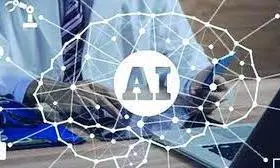AI Needs to Evolve Further for Crime Analysis, Say Police

Hyderabad: From detecting accidents to predicting crime patterns, cutting-edge artificial intelligence (AI) tools are being developed to make communities safer.
While the technology shows great promise, concerns over public privacy, safety of public information and the chequered accuracy of AI tools is causing hesitation among police departments and public alike.
AI is being used to create tools that can analyse data and provide real-time insights to law enforcement agencies. These tools are designed to enhance the speed and efficiency of crime detection and prevention.
One such example is facial recognition technology. It analyses CCTV footage to identify individuals based on their facial features. This tool is especially useful for tracking suspects or finding missing persons.
AI systems compare a person's face to a database of known identities, matching unique markers such as the distance between the eyes or the shape of the jawline. However, critics argue that inaccuracies can lead to wrongful identifications.
Fire and accident detection is another AI-powered system that can monitor CCTV feeds to detect fires or accidents in real time. These tools use algorithms to spot unusual behaviours, such as smoke plumes, flames, or erratic vehicle movements.
Once an anomaly is identified, the AI system sends an alert to emergency responders, potentially saving lives by cutting response times. Sujit Rao, a developer working with a private company, said “This tool does not require heat-sensing cameras, it detects sudden bright flashes and smoke, and analyses the footage. Based on it, it will immediately contact emergency services.”
Historical crime data can be fed into AI models to uncover patterns and predict future criminal activity as well. For example, machine learning algorithms can analyse data on burglaries to identify high-risk areas.
The AI systems can also detect weapons in public spaces by analysing CCTV footage. Using image recognition technology, these tools can identify guns, knives, or other dangerous objects, triggering immediate alerts.
Some of the newly-introduced AI tools are being used by the police department for advanced crime investigations that involve uncovering the different modus operandis criminals work with.
Dopams is an AI tool used by the Telangana police for cracking down on drugs and also classifying the modus operandi of a particular criminal.
Explaining the role of Dopams, Maheshwaram ACP B. Laxmikantha said, “A bike theft offender can also be a chain-snatcher, or even a drug peddler. While he can be caught by one police station, Dopams enables us to identify which crimes he has committed within other police station limits. This would also help us open a history sheet against the criminal.”
Police also use tools like ‘Darpan’, which help in tracing missing and unidentified persons. Unidentified bodies that are found in hit-and-run and murder cases are identified and traced through this tool. Apart from that, Talaash is an AI tool that traces missing children out using biometric evidence extracted from the Aadhaar card of the missing person.
Despite the obvious benefits, police departments are cautious about adopting AI technology. One major concern is data privacy. AI systems require access to vast amounts of data, including sensitive information from police databases and CCTV networks. Sharing this data with private companies raises questions about misuse and breaches.
Another issue is accuracy. While AI systems are improving, they are not perfect. Kukatpally ACP K Sreenivasa told Deccan Chronicle that these tools need more development in terms of accuracy.
Explaining further, he said, “In case of road accidents, it does not detect an accurate location beyond 100 metres. It is useful and safe, undeniably, but needs more work to be done in terms of accuracy.

